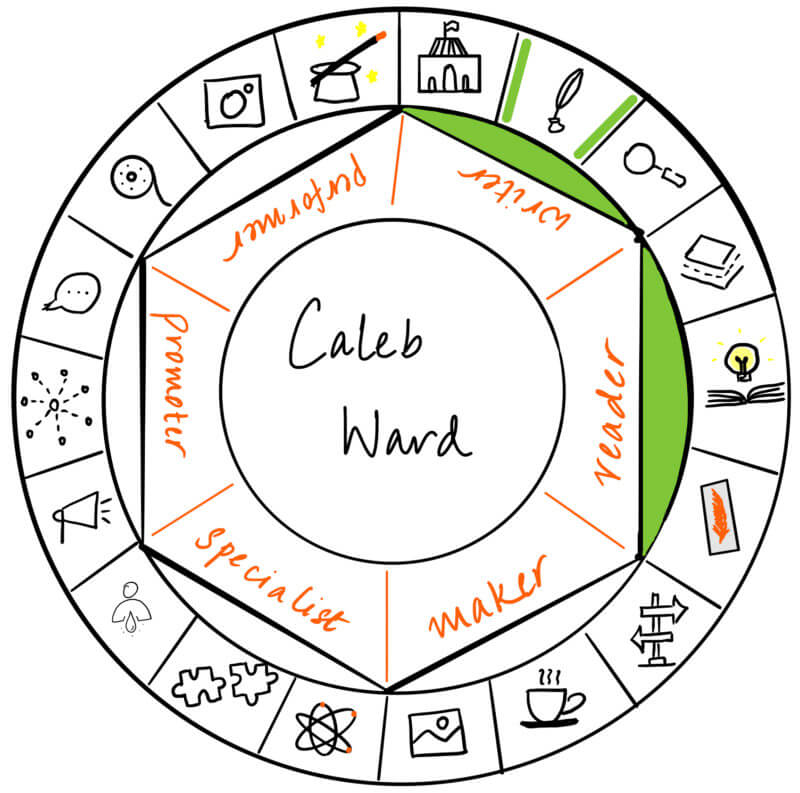Hello, friend! Welcome to a new post in The Creator’s Roulette! Today I am hosting author Caleb Ward to share about writing conflict. Caleb Ward is a Christian fantasy author and avid reader of authors like Ted Dekker, CS Lewis, Bryan Davis, and Frank Peretti. Caleb’s passion is to create amazing worlds with complex characters that also deepen our relationship with God. Let’s learn from him about incorporating conflicts in storytelling!

Writing Conflict in Stories
A guest post by Caleb Ward
Have you ever wondered what keeps a story interesting? Have you wondered how an author can completely immerse you into their world?
While characters and world building play apart in making the story rich and vivid, you can have the most vivid story in the world but that doesn’t make the story itself interesting.
So what’s missing? Conflict.
Conflict is what makes a story engaging. It’s taking that perfect world and complex characters, and throwing everything into chaos. It creates a sense of urgency for the characters and by extension, you the reader. And every chapter, every paragraph needs some sort of conflict.
Understanding conflict
While classic literature could get away with spending dozens of pages on describing a table or adding random stories that don’t contribute to the larger plot, audiences today get bored very easily. If a story today doesn’t have a sense of urgency, readers will move on very quickly. And the way to keep readers engaged is through having constant sources of conflict.
So what is conflict? Does it mean that every chapter needs a massive sword fight or an argument? No, although those can be sources of conflict. Instead think of every chapter, and going smaller, every paragraph, as a little piece of a story. It’s a moment of time for those characters. And that little piece needs to contribute to the larger story. All the pieces need to build together to create a sense of urgency for the character and the reader.
Forms of conflict
So what are these pieces we can use to create the sense of urgency? This is done through the three forms of conflict.
The first is man vs. man. This could involve an argument between people, it could be a clash of ideals or values. Or it could be people coming together and trying to solve the bigger problem. Perhaps one of the characters is keeping a secret, or they’re struggling to tell someone a painful truth. These are all forms of conflict between characters. Just as in real life, as different people see the world differently, conflict will arise. Sometimes this will lead to arguments, but it can also be those people working together toward a common goal.
Then there’s man vs. nature. This is the massive monster our main character is staring down. This is the deadly disease, approaching flash flood, or time itself. These are external forces the character must face as the ticking clock threatens to destroy them.
Lastly, there’s man vs. himself. This is the internal conflict the characters face as they struggle with their emotions, trauma, and pain.
While these are separate forms of conflict, they will often work together. For example, the death of a loved one is an external man vs nature conflict but it will create man vs himself conflicts and could also create man vs man conflicts.
Conflict in genres
All of these types of conflict are necessary for a story, but the balance between them will depend on the genre. A fantasy man vs man conflict could involve a literral sword fight, whereas in a romance novel the conflict could come from a verbal argument.
The pacing at which these conflicts play out will also depend on the genre. A science fiction novel will have a much faster pace than a romance novel, relying more on man vs nature and less on man vs himself. And even within genres there will be a variety. A historical novel can be fast paced and action oriented, or slower paced and focused on internal conflicts.
But either way, there always needs to be conflict.
Using conflict
As a fantasy author, I must center my entire entire story around conflict, bringing these types together create chaos for my characters and force them to grow. While outlining, I will often ask myself, what is the worst possible thing that could happen to this character. These ideas might not be used, but it’s an exercise in thinking about how to increase the conflict within the story.
But does this mean that characters have to be miserable all the time? Of course not. Happiness, peace, and love can also create conflict. Lets say a character experiences a moment of pure happiness. If something threatens that happiness. That character’s response is to want more of it and protect it. By fighting for happiness, or any other positive emotion, the author can both balance out the darkness while at the same time elevate the urgency.
This is how to create a fantastic story that readers will be sucked into and unable to put down.
What are some strategies you use to bring conflict into your stories?
Thank you for hanging out with us today. Connect with Caleb on his website, Facebook and Instagram.
Photo on Unsplash

Thank you for sharing, it was quite informative.
Thanks for reading! Hope you are doing well 🙂